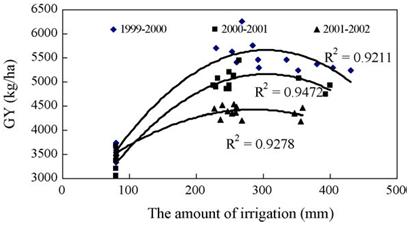Reduce surface water abstraction with return
Contents
- 1 Reduce surface water abstraction with return
- 1.1 General description
- 1.2 Applicability
- 1.3 Expected effect of measure on (including literature citations):
- 1.4 Temporal and spatial response
- 1.5 Pressures that can be addressed by this measure
- 1.6 Cost-efficiency
- 1.7 Case studies where this measure has been applied
- 1.8 Useful references
- 1.9 Other relevant information
Reduce surface water abstraction with return
Reduce surface water abstraction with return01. Water flow quantity improvement
General description
There are many water uses with return: cooling water systems, hydroelectric power stations, agriculture, etc. To reduce surface water abstraction for hydropower and let more water flowing at the bypassed reaches, the first measure would be to decrease energy demands and use alternative energy sources. Environmental policies and agreements with energy companies are essential for achieve the environmental objectives.
Industrial water use efficiency can be increased with improvements in the design of water systems, reductions in water consumption (e.g. in pulp mills a reduction of water consumption results in increased potential for energy integration and energy saving (Wising et al., 2005)). These technical advances entail environmental and economic benefits (water and energy savings).
In agricultural water uses with returns it is necessary to reduce the water expend in irrigation, trying to satisfy the water needs of the crops and maximizing water use efficiency (WUE). Some studies have shown the suitability of WUE like an instrument for an efficient use of water. Since ET is linearly related to the amount of irrigation, it doesn´t happen the same with the grain yield (GY) (figure 1). A study developed in China North Plain revealed that higher irrigation decreased WUE and WUEet of crops (winter wheat), therefore excessive irrigation might not produce greater yield or optimal economic benefit (Sun et al., 2006) but a depletion of water resources and excessive loss of water by drainage. In Oweis et al. (2000) it is found that a fraction of the supplement irrigation can maximize WUE regarding to other factors (Nitrogen supply, sowing date).
In irrigated crops it is recommended to improve irrigation practices and systems to maximize their efficiency, although the technology available is extremely advanced and is difficult to improve the localized irrigation and other high efficiency techniques. It is necessary to modernize the infrastructures to reduce water loss during the transport. Traditional irrigation techniques, like open furrow irrigation should be practised according to the best management practices (slope, quantity flow, timing, furrow length, etc). For example, in two-slope furrows, with the minor slope in the lowest part and slope transition at ¾ of the furrow length the efficiency is increased around 13% regarding to single-slope furrows (Vázquez, 1999). Other BMPs are:
- Straw mulching to reduce soil evaporation.
- To hoe the soil surface that cut down the soil moisture transfer to soil surface.
- Irrigation scheduling for reducing soil evaporation
Applicability
The applicability of this measure, like it happens to Reduce surface water abstraction with return depends on management, technological, political and social issues. A method to improve water use efficiency is water pricing and full cost recovery impulsed by the Water Framework Directive, and the clear definition of water rights.
Anyway, water pricing may not always be enough incentive for achieve water use efficiency. This happens when price elasticity for water demand is almost zero (e.g. when water bill supposes only a small fraction of production costs or incomes), when alternative crops or water resources are not possible due to technical, social or economical constraints or when the greater part of water costs are fixed expenses. Increasing water price would reduce water demand when price elasticity is high, and there are a large number of studies showing that irrigators’ water demand is highly inelastic in the short term, at least at low prices. Water consumption does not fall until prices reach such a level that farm income and agricultural employment are negatively affected (Berbel, Gomez-Limón, 2000). Response to price increases is not continuous as there is an optimum supply of water for each crop and the water production function implies that the optimum is not sensitive to price increases until a break-even point is surpassed, when a new crop is introduced or farmers simply go for rain-fed crops (Berbel et al., 2007).
Expected effect of measure on (including literature citations):
- HYMO (general and specified per HYMO element)
- physico � chemical parameters
- Biota (general and specified per Biological quality elements)
Temporal and spatial response
Pressures that can be addressed by this measure
Cost-efficiency
Case studies where this measure has been applied
- No projects apply to this measure.
